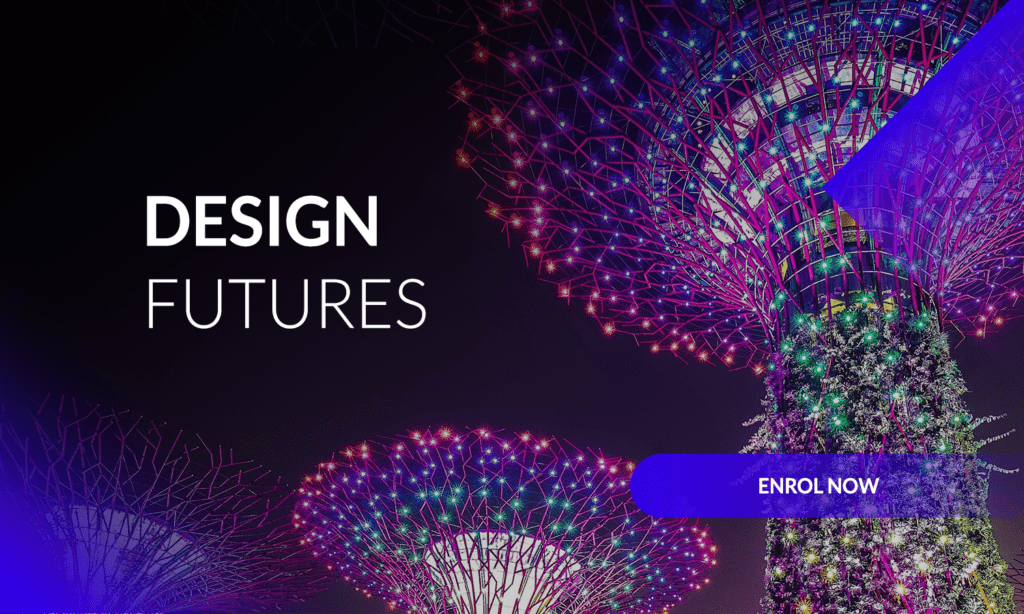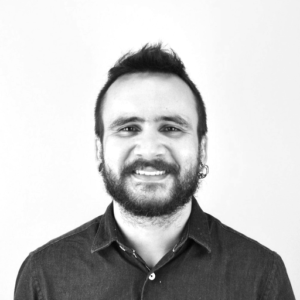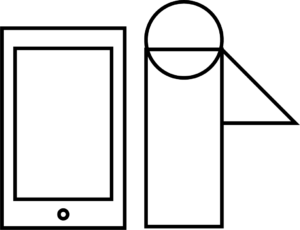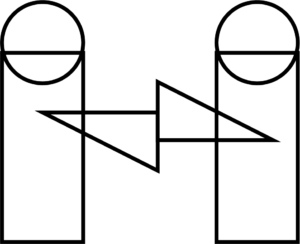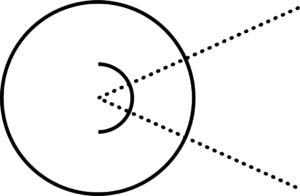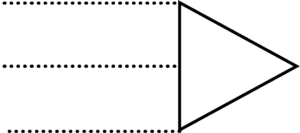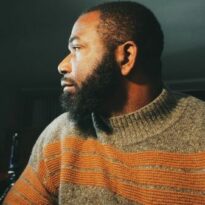According to a recent UNESCO declaration, The future is uncertain. Climate change, pandemics, economic crisis, social exclusion, racism, the oppression of women, inter-generational conflict, and more shatter the conventional images of the future.
This is not a small problem. Without images of the future that inspire hope and foster collaboration, there is a high risk of despair and war. The malaise of poverty-of-the-imagination must be overcome.
The question is, how do you predict futures?
What are the essential future skills everyone should have at this critical juncture of our human existence?
Every business and organisation constantly makes forecasts and studies trends to make informed decisions about what’s coming. Now, there are a group of designers who are leading this field using multidisciplinary design skills.
Echos is leading this charge by bringing these rare but essential skills into focus in DESIGN FUTURES program.
I sat down with Andre, a leading faculty for this program to have a quick look into what exactly is in DESIGN FUTURES and why every business should check-in as a matter of urgency.
Meet André Arruda
Kehinde: This is all about design futures; how did you come about design futures yourself?
Andre: My background is in industrial design. I graduated in industrial design here in Brazil. After that, I specialised in strategic design. This was in 2012, more or less, and I had my master degree in prospective scenarios. For two years, I have had to study and go deeper in the futures areas. I worked and coordinated a long term plan for our city in this area, building prospective futures for cities for a long term plan. Since last year, I have been working here at Echos as a strategic design lead and coordinating design futures course here in Brazil.
Kehinde: What really inspired you to do this? Is it because you wanna be one of the prophets predicting the future?
Andre: Good question. I always tell my students this story. One day, I saw the news in the newspaper where they were saying that the municipality wanted to build a vision for the next twenty years for our city. I was already into projects in this area of work. Naturally, I wanted to see how I could create, facilitate, or be part of the vision. So I took the news and sent it to my teacher/researcher group and a friend of mine actually here in Brazil, and that was how it started.
Kehinde: You are such a visionary yourself…
Andre: I like to search for a new opportunity
Kehinde: So UNESCO says knowledge and literacy about futures will become essential skills for the 21st century. What does that mean, and why is that important?
Andre: I think this quote started to have more relevance during the pandemic. Before that, UNESCO began to work on future literacy. This is a huge opportunity where companies and organisations start to build a mature vision for the future.
For Instance, what kind of product or service do we need to prepare for the long term?
Because now, more than ever, technology evolves every year and companies need to prepare for these changes by mapping these future scenarios with what we call wild cards. In summary, I believe that now, more than ever, organisations are more interested in building these long term visions and being more adaptable for different scenarios.
Kehinde: InterestingSo, how do we use design for these, because this sounds like something more of, maybe, strategy or maybe how’s design even considered part of design future? I know there is speculative design and all sorts, but why design futures?
Andre: I would say a human-centred design approach can be more beneficial to these future perspectives. In my opinion, the futures areas are more related to strategic, economic, political or social philosophy. Add the human-centred design approach to these – talk about design thinking, empathic perspective, in-depth interviews, deeper research, etc. – we can build out these futures.
We do this by using different tools, methodologies, and processes. So what we usually do is create various workshops putting together different methods or tools. Not only from futurology but also from design area and build something relevant to our clients.
Kehinde: Could you give me an example of how this has worked before? A case study?
Andre: Actually, this is one of my tasks for the following year. To build a playbook – we still don’t know what kind of material it would be – but to build the future for the food industry. For example, we are working with a client here in Brazil called Ajinomoto. They have more than 100 years working in this area, and they want to understand how the younger generation would see the future of the food industry.
We have done a lot of research, in-depth interview, qualitative research. After that, we created one workshop together with the client and started facilitating different tools. For example, we built the future vision for the company about the food industry. After, we started creating different scenarios and trend maps related to technology, culture, behaviour, and specifically, the Brazilian public. And yes, this is one example. Now, we are thinking about the pharmaceutical industry. They wanted to understand what would be the future of the pharmaceutical industry. So, we are now applying our work course – we are creating different scenarios, creating this trend map and checking the weak signals.
Next, it would be creating a strategy for the long term perspective about this industry. Here, we usually depend on what are the areas of interest to our client. Until now, we have worked in home management, food industry, innovation ecosystem, pharmaceutical industry this year. The idea, of course, is to share these perspectives: what we have created, bring new clients, and consolidate these perspectives.
Kehinde: Tell me why company executives and managing directors should take Design Futures as a matter of urgency?
These Are Five Reasons Why We Need to Treat Design Futures as a Matter of Urgency
1- Technology revolution
We tend to think from a technological perspective about futures because it is part of our daily lives. We perceive more clearly the exponential changes that impact our everyday context. The pace at which technology evolved at the beginning of this century, seen by Gartner’s technological curve, demonstrated the principal moments of technological adoption. Still, currently, the cycle of new technologies has been decreasing every year, causing new solutions to appear almost simultaneously in different territories. This real-time monitoring is exceptionally challenging.
At the same time, we are catching a glimpse of the moment when the technological singularity is ever closer to reaching us, with the adoption of solutions such as 5G, blockchain, quantum computing, component miniaturisation, low-cost satellites, space
travel, allowing us to be more and more daring in this vision of futures.
2- New generation / cultural alignment with the new generation
When we talk about futures, we are unconsciously thinking for whom we are going to
build these visions, and we need to take into account not only the technological issue but also other cultural, social and behavioural aspects so that there are no gaps between
desirable futures and the public that will live in these futures. In this sense, it is essential
that we understand more about the new generations, their aspirations, which world they
are preparing for, as well as the technological and environmental impact that will
radically transform the lives of young people in the coming decades.
3- Making sure we’re not leaving the older generation behind
When we discuss futures, some layers are more in line with speculation. Still, we can also talk about some irreversible trends. One of them is the aging of the population more healthily. In the future, in the short term, we will start to have more and more elderly populations and a reduction in the birth rate. In this sense, we will need to develop strategies not only to adapt the vision of young people but also for an inclusive
and accessible future for older people.
4- Climate change
Another irreversible trend that we are following is the issue of climate change, which will radically change the way of life for generations to come. Scientists and researchers already bring an alarming panorama that we are getting closer and closer to the point of no return concerning the environmental issue. In this sense, which future will we want to imagine and build? Since the 70s, we have discussed the concept of Deep Ecology,
where the human being is not seen only as a resource extractor but as part of a broader and more integrated system with global balance. Where our actions have impacts direct and indirect on the environmental issue. This is one of the possible paths so that, in the
future, human beings will continue to exist and be able to prosper sustainably.
5- COVID-19 precipitation and the new normal
The discussion about futures, despite being old, took on new proportions from the pandemic context. It is making companies, industries, institutions, in general, radically evolve their processes through digital transformation to remain active. We are currently beginning to glimpse a new horizon. The vaccinated population will start to resume activities in person without losing all the evolutionary learning during the last 17 months. In this sense, all short, medium and long term strategies and visions will need to be recalibrated so that new visions are mapped and desirable futures are (re)built.
—
Follow us on social
instagram: @echosaustralia
facebook: @ECHOSaus
linkedin: @echos-innovation-lab
youtube: ECHOS Innovation Lab
spotify: Desired, the podcast
How Can We Help?
For training and Innovation Journeys in your company:
check out our in-house course offering.
____
For upcoming courses in your region: visit our website.
____
If you have a special project and would like to use Echos’ consultancy services: send us an email: contact@echos.cc
Want to speak to a real person? Call us on 1300 502 006


